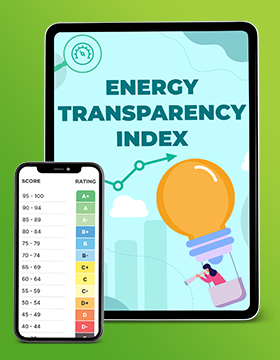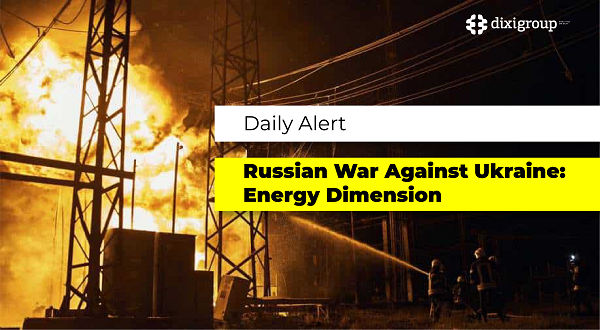Gasoline at UAH 72: how the Iran-Israel war affects gas stations in Ukraine
Fuel prices rise amid Middle East conflict, but truce remains in jeopardy

In the near future, the price of gasoline may soar to 72 UAH per liter of fuel. All because of the conflict between Israel and Iran, economists predict. However, today, US President Donald Trump announced the achievement of a full agreement between Israel and Iran on a ceasefire. However, this morning, the Israeli army, the IDF, reported that Iran launched missiles towards Israel, despite the declaration of a ceasefire.
Israeli Defense Minister Israel Katz has already stated that he ordered the IDF to respond decisively to Iran's violation of the ceasefire, striking intensively at regime targets in the very center of Tehran. So the end of the war and the truce are now under threat.
What can Ukrainians expect from the conflict in the Middle East, Ukrainian Energy has learned.
The US-Iran conflict: why oil prices soared and then fell again
The conflict between Israel and Iran has reached a dangerous phase of open military confrontation, becoming one of the greatest threats to security in the Middle East. Tensions have been building for years due to mutual accusations of preparing terrorist attacks, the activation of Iran's nuclear program and the strengthening of the positions of pro-Iranian groups near Israel's borders. In recent days, the situation has escalated after a missile strike on an Israeli facility in Tel Aviv, for which Iran was blamed. In response, Israel launched a series of massive attacks on Iranian military facilities in Syria and Iran itself.
The armed conflict reached its peak in June, when the US joined the operation against Iran, striking nuclear facilities in Fordow, Natanz and Isfahan. According to President Donald Trump, all targets were successfully destroyed.
In response, Iran threatened to close the Strait of Hormuz, one of the most important sea routes for oil exports. Such a move could sharply reduce the supply of raw materials to the global market and provoke a jump in prices to more than $ 100 per barrel. At the same time, analysts note: such a scenario would hit Iran itself and its regional allies first of all. This was reported by Reuters.
The escalation led to an increase in oil prices to five-month highs. This was immediately reflected in the fuel market in Ukraine, where gasoline prices began to rise due to expectations of higher import prices.
However, on June 24, the situation changed dramatically. The ceasefire agreement between Iran and Israel, announced by Trump, came into force, which gave a signal to the markets that the risk of disruptions in oil supplies was reduced. Prices began to decline rapidly, falling to almost a two-week low.
US stock indexes showed positive dynamics, and the dollar continued to fall against the backdrop of easing geopolitical tensions. Israeli Prime Minister Benjamin Netanyahu confirmed the agreement to the ceasefire and stressed that Tel Aviv had achieved its goals in the operation against Iran.
Oil lost more than 3% in value in just 24 hours, continuing the downward trend that began the day before, when prices collapsed by another 9%. This collapse was accelerated by Iran's symbolic response - a strike on a US base, which did not lead to significant destruction, thereby demonstrating a readiness to de-escalate.
As tensions around the Strait of Hormuz eased, the price of US crude futures fell another 3.7% to $65.96 per barrel, the lowest since June 11, when the escalation between Israel and Iran began. What happens next depends on the further course of the conflict.
Unstable fuel market
The Ukrainian fuel market has once again come under pressure from global geopolitical events. In recent days, the price of gasoline has increased by 4 hryvnias per liter, which is equivalent to approximately 8–9%. Experts say the main reason is instability in the Persian Gulf region, one of the key oil supply points in the world.
The escalation between Israel and Iran has caused a sharp increase in world oil prices. And since Ukraine imports the vast majority of oil products, domestic fuel prices are feeling the effect of changes with a delay of 2–3 weeks. Currently, the market estimates the potential for further price increases of another 2 hryvnias per liter.
According to Oleg Pendzin, head of the Economic Discussion Club, Ukraine does not have self-sufficient oil refining capacity, and therefore is forced to focus on external markets. If Brent crude oil rises to $100 per barrel, the cost of gasoline at gas stations could potentially reach 72 UAH/liter. At the same time, such a scenario is not the baseline, and experts estimate the probability of its implementation as low.
An additional factor that may affect price dynamics is the temporary abolition of fines for failure to comply with the requirement for the bioethanol content in gasoline. From May 1, 2025, a law came into force in Ukraine, requiring the addition of at least 5% bioethanol to gasoline. However, the Verkhovna Rada decided to suspend fines for fuel retailers and wholesalers for failure to comply with this norm until the end of the year.
Another important factor is the consequences of the Russian attack on the Kremenchuk Oil Refinery. According to market data, this facility provided up to half of domestic gasoline needs. Due to the destruction of the infrastructure, the government is forced to discuss the possibility of returning to the market Euro 0-2 gasoline, which has an increased sulfur content and pollutants.
Thus, the Ukrainian fuel market is in a situation of high sensitivity to global and domestic events. Further price dynamics will depend on the stabilization of the world oil market, the pace of infrastructure repair and the state's fuel policy.
It is getting more expensive than it is getting cheaper
According to the forecast of the founder of the Prime group of companies, Dmitry Lyushkin, the cost of gasoline will reach 63–64 UAH/l, and premium brands will reach 67–68 UAH/l. The reasons for this, according to him, are the increase in world oil prices and the consequences of Russian shelling of the Kremenchuk Oil Refinery.
Diesel fuel, according to Lyushkin, will rise in price to UAH 62/l, provided that the price of a barrel of oil does not exceed $75. According to him, large gas station chains, such as OKKO and WOG, set a margin at UAH 14–15/l, which significantly affects the final cost of fuel.
He also notes that the situation is complicated by a temporary problem with logistics after the strike on the Kremenchuk refinery. This, in particular, applies to premium grades of gasoline, which may increase in price by another UAH 3–4. However, according to the expert, the problem is not long-term - in 2–3 weeks the situation will stabilize.
In addition, Dmytro Lyushkin predicts that autogas will increase in price by at least UAH 2 per liter.
Despite the overall growth, the expert believes the market is relatively stable. He stressed that the speculative increase in wholesale prices, which was observed at the end of last week, is gradually subsiding - the wholesale cost of diesel has already decreased from 50 to 49 UAH/l, although, according to him, the price is still overstated by 2 UAH.
According to Lyoushkin, if geopolitical tensions decrease, in particular in the Middle East, fuel prices in Ukraine may go down. However, he emphasizes: "Everything is getting more expensive here faster than it is getting cheaper," so the process of price reduction will be gradual and not as rapid as the growth.
Is the world on the verge of a new oil crisis?
Geopolitical tension in the Middle East continues to grow. After the US airstrikes on Iran's nuclear facilities, a decisive response was heard in the Iranian parliament - support for the initiative to block the Strait of Hormuz. This was reported by the representative of the parliamentary committee on national security Ismail Kousari. The final decision will be made by Iran’s National Security Council, TRHaber reports.
Statements by the Iranian military also indicate the seriousness of their intentions. The commander of the Islamic Revolutionary Guard Corps Navy, General Alireza Tangsiri, said that Iran is capable of blocking the Strait of Hormuz “within hours.” And Hossein Shariatmazari, an adviser to the Supreme Leader, directly called for the closure of this critical maritime corridor for Western shipping, as well as possible strikes on US military bases in the region.
The Strait of Hormuz is a bottleneck in the global energy chain, through which up to 21 million barrels of oil are transported daily, which is about a quarter of the world’s seaborne oil exports. It connects the Persian Gulf with the Gulf of Oman, providing a route for oil and LNG from Iran, Iraq, Saudi Arabia, Kuwait and the UAE. According to various estimates, up to 30% of global liquefied gas exports also pass through it, writes Bloomberg.
Although the strait’s waterways legally belong to the Sultanate of Oman, any blockage of it could have catastrophic consequences for the global oil market. Amidst Iran’s threats, ships are leaving the region en masse — at least 17 tankers have already left the Persian Gulf, with dozens more waiting near Hormuz, according to Marine Traffic data.
JPMorganChase analysts assess the potential consequences of such a scenario as “historic”: in the event of a complete blockade, oil prices could jump to $130 per barrel. At the same time, a partial closure, even for a short period, could cause a disruption comparable to the oil crises of the 1970s.
However, some Western officials are skeptical about the reality of such a move by Tehran. US Vice President J.D. Vance noted that a complete blockade of the Strait of Hormuz would be economic suicide for Iran itself, as the country is also dependent on oil exports via this route. However, the risk of escalation remains high, and oil once again becomes a hostage to geopolitics.
China will suffer
Tehran's rhetoric about the possible closure of the Strait of Hormuz, through which a significant part of the world's oil exports pass every day, has caused a mixed reaction among Ukrainian experts.
The founder of the Prime Group of Companies Dmitry Leushkin is skeptical about such a development. In his opinion, even with the political will to implement a complete blockade of the strategic strait will be extremely difficult from a technical and military point of view.
"I do not believe that Iran will block Hormuz. They can interfere with navigation, manipulate satellite data, even sink individual ships, but this will not stop traffic. The strait is quite wide. To really block it, you need to sink dozens of supertankers and there will still be pilots who will pave a safe route. In addition, there is an American military base nearby, and I very much doubt that the States will allow Iran to block such an important trade corridor right under their noses," Leushkin notes. He also does not believe that the current conflict between Iran and Israel will drag on for a long time.
Military analyst Viktor Taran also voiced his vision of the situation. He points out that the main victim in the event of a blockade of the Strait of Hormuz will not be the West, but China.
“70% of Iranian oil consumed by China goes through Hormuz. If Iran really “turns the valve”, it will stop factories in Guangzhou, create traffic jams in Shanghai, and the Chinese yuan will not be able to withstand the blow,” warns Taran.
In his opinion, Iran has found itself in a geopolitical zugzwang: if it goes to blockade, it may lose its strategic partner - China, and with it the support of regional allies such as Saudi Arabia and Kuwait. If it refuses to take decisive action, it will lose its image of strength and a regional leader.
“This is no longer a test for Iran. This is a test of the strength of the China-Russia-Iran axis,” the expert concluded.
Economist Pavlo Vernivsky also does not believe in the realism of blocking the strait.
“33 kilometers at its narrowest point is not the Suez or Panama Canal, which is easy to block. Even if Iran sends warships there, what will they do – shoot at tankers? And what about the corresponding reaction from the US or its allies?”, Vernivskyi asks.
He recalled that a similar situation had already occurred in the Bab el-Mandeb Strait, where attacks on ships by the Yemeni Houthis provoked a tough military response. “That scenario showed: the world community will not allow such things to become the new norm,” he stressed.
Olena Marchenko, specially for “Ukrainian Energy”








